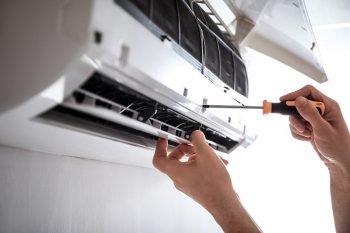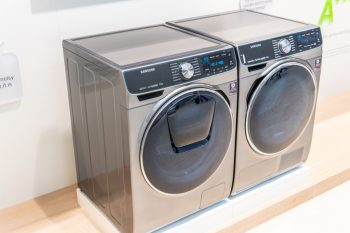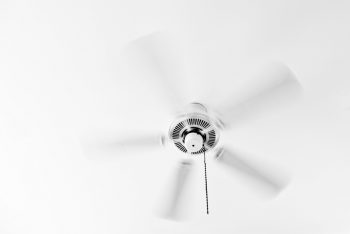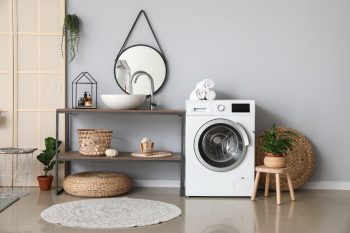
Washing machines are convenient appliances to have around the house. However, your laundry space can be a real eye sore without proper pipe management, ruining your house’s appearance.
Exposed pipes are not very fun to look at. But with some creativity, there are many ways to hide them in the laundry room or basement.
If you are considering picking up an excellent DIY project for the laundry room, this post will look at ways to conceal exposed pipes and make the space more appealing and tidier.
Are you ready to start concealing pipework in your laundry room? Painting or covering the pipes using curtains, wrappers, bins, and plants is a great way to start.
However, if you are okay with some architectural changes to the room, you can install customized shelves, false walls, corner beads, and partition dividers.
Fortunately, you can use many concealing techniques to hide exposed pipes, depending on your desired decor and budget.
10 Ways To Hide the Pipes in Your Laundry Room
Hiring a professional to deal with your exposed pipes can be quite expensive. We will dive into ways to disguise the pipework in the laundry area while saving a few bucks.
Here are some fun ways to conceal pipes in your laundry room and improve its aesthetics:
1. Hang Curtains To Hide the Pipes
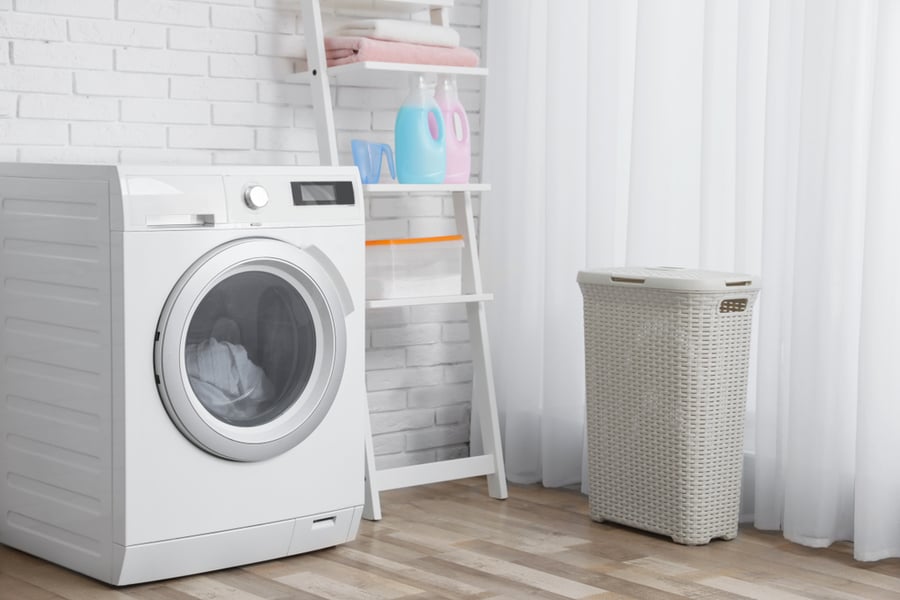
Have you thought about getting curtains? One of the easiest and inexpensive ways to hide pipework in the laundry space is by using curtains and fabric.
Curtains cover the pipes and give you easy access if you need to turn on a valve, check for leaks, or replace them. In addition, you can also switch the fabric easily when you think of changing the room’s theme.
You can install tension rods or hanging hooks above the pipes and fit in the curtain you like. Make sure that the fabric you use matches the room’s overall theme.
2. Try Some Decorative Wrappers

You can also get decorative wrappers to hide exposed pipes in the laundry space.
Wrappers are a great option if you only need to disguise small sections of pipework, and they are also affordable for any remodeling around the house.
Likewise, wrappers are perfect for protecting pipes from corrosion.
The wrappers come in various colors and themes to choose from. The most common covers are washi tapes and can be found in your local craft store.
Material wrappers like wood, pole, or stone are also pretty useful while trying to hide pipes around the room.
In addition, you can also find wrapping vines, butterflies, or LED rope lights to give your laundry room a bit more flare and a unique design.
3. Use Bins To Hide the Pipes
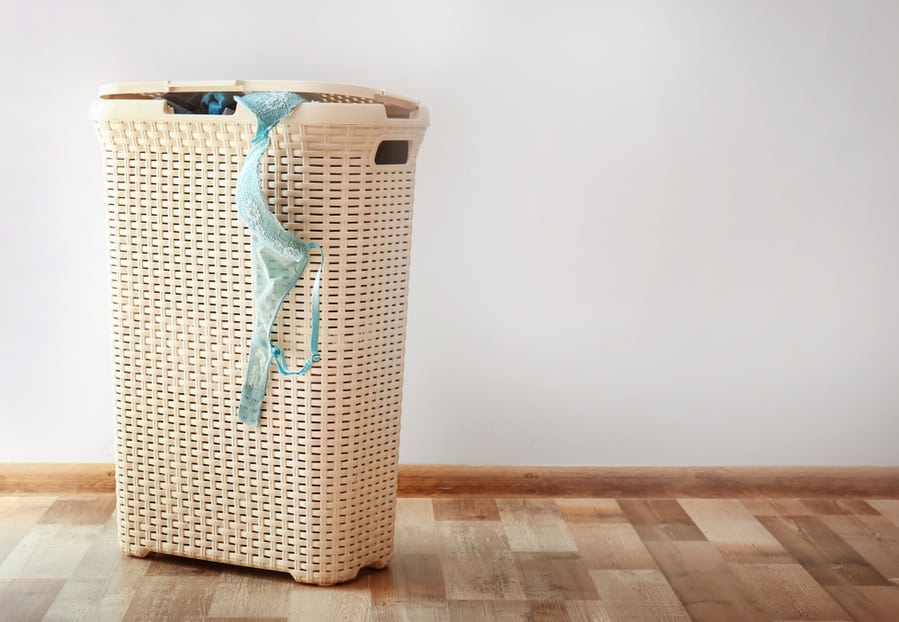
Bins are a good way of adding storage space in the laundry room. You can also take advantage of the stylish baskets by placing them in front of the pipes in the room for concealment.
However, this works if pipes are closer to the ground and do not take up too much space.
But if a pipe still sticks out after covering it with a bin, you can use the other methods discussed in the article to hide the exposed sections.
Ensure that the bins or baskets are a few inches away from the pipes to prevent potential leaks from damaging the bins or your favorite clothes.
4. Paint the Pipes To Match the Theme of the Room

It might seem a bit too obvious, but painting the pipes can do much good for the laundry room at a fraction of the price.
You can paint the pipes to match the colors of the walls or just use a neutral color to ensure that they do not stand out.
5. Hide the Pipes Behind Some Shelves
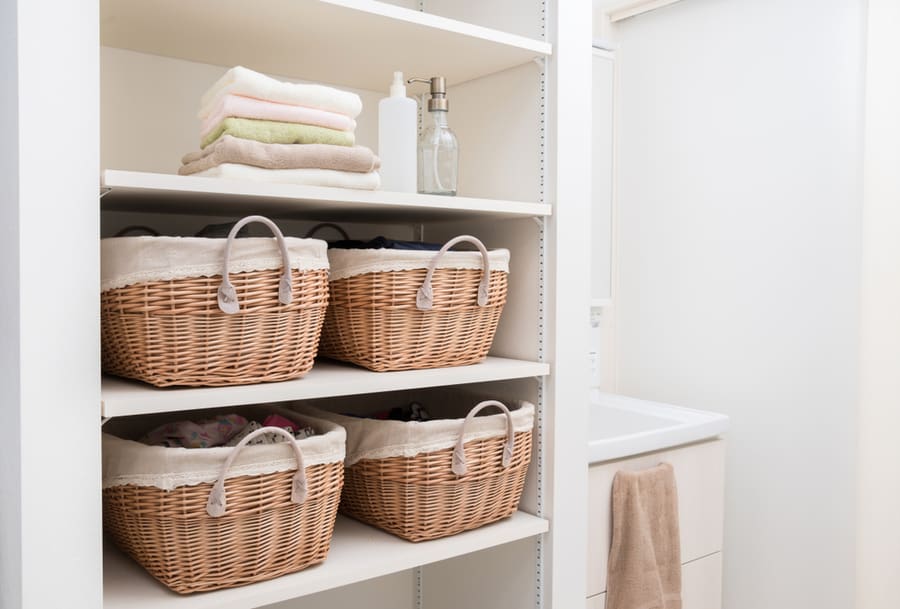
Customized shelves present an exciting way to go crazy with your plumbing issues.
Installing shelves will conceal pipes and add more space in the laundry room. They also add a little bit of accent and personality to the space.
Before installing any shelves, proper planning can help you avoid expensive work. You need to know if you want the shelves to go around, in front, or above the pipeline.
In addition, you should also consider what you want to put on your shelves and get the appropriate kind of wall-mounting brackets that will support the weight.
6. Using Plants To Cover Up the Pipework
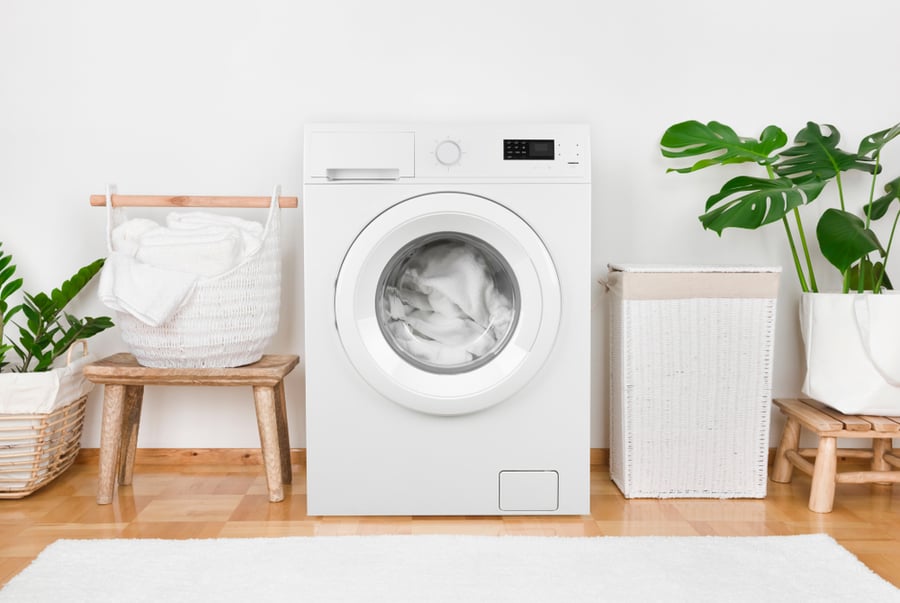
Plants can also be a great addition to your laundry room and will hide unsightly pipes.
There are loads of options on how and where to use plants around the room. Small bushy plants are great for the job if pipes are close to the ground.
However, climbing or hanging plants are ideal for disguising vertical running pipes.
Potted plants can add life to the space while providing fresh air to the stuffy room. They are also great for your health, boost your productivity, and improve your mood as you do your laundry.
7. Box the Pipes In
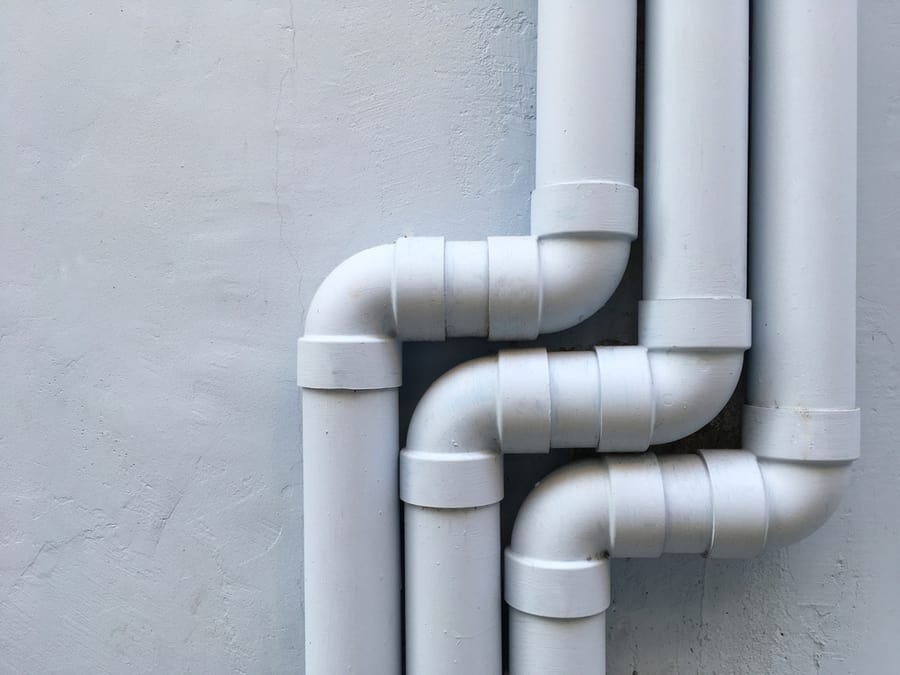
Boxing the pipes into the side of the wall is also another way to disguise your pipework.
If you are dealing with low-hanging pipes, you can run wooden or vinyl beads to give the room a fresh look while keeping the pipes out of sight.
The box beads have spaces between them to fit the pipes and protect them from other elements that can corrode them or wear them out.
However, if you have a problem installing the beads to the wall, it is always a good idea to call a contractor to get the job done.
Poorly trimmed beads can be unsightly and can make the room lose more of its appeal.
8. Build a False Wall

Installing a false wall is another option for the exposed pipes.
False walls can give you more to work with, allowing you to experiment with the design and layout of the walls.
In addition, false walls protect the pipes from damage due to corrosion or accidental hits.
On the other hand, adding false walls to your laundry room is a huge step. In addition, buying the necessary materials like wooden beams and plasterboards can also put a dent in your wallet.
False walls can be challenging to pry and fit. You risk damaging the laundry room and the house without proper measurements, tools, and architectural knowledge.
Letting a contractor do the work for you is always a good idea.
9. Install a Divider Screen

Instead of installing a false wall, a divider screen is also a perfect way to conceal stubborn pipes around the laundry room.
In addition, you can use a partition room divider to hide the laundry space altogether if it is located in an open area around the house.
10. Use a Sink Skirt To Hide Your Pipes
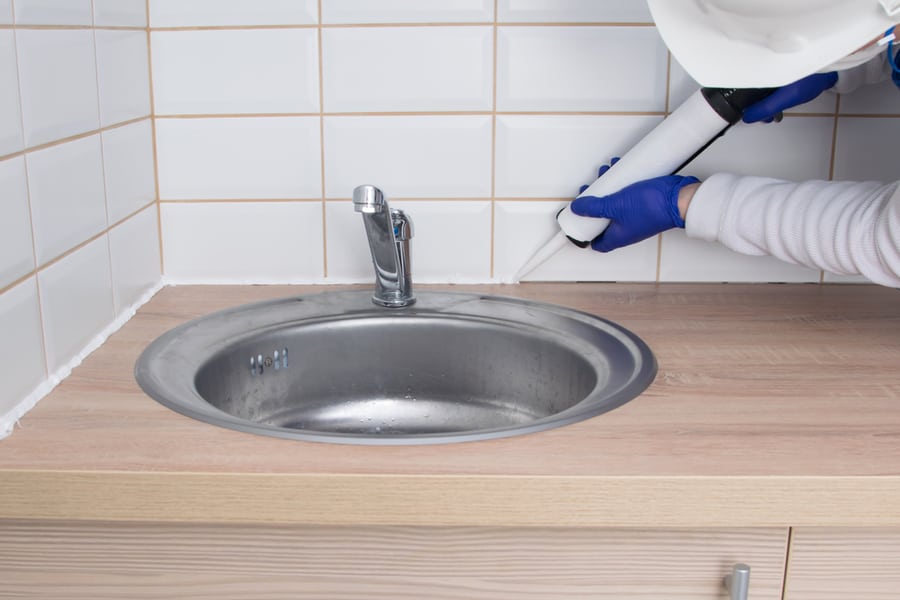
Finally, sink skirts easily cover any unfortunate pipework lying around the laundry room.
The skirts come in various colors and styles that will match the theme of the space. Furthermore, they are an inexpensive way to spice up the room and add a homey element.
Summary
Planning is crucial before taking up DIY projects, including hiding stubborn pipes around the laundry room. It will get you more organized and improve the project’s chances of success.
Do not be afraid to go all out with your creativity. Though some techniques might be more expensive, remember that even a paint job or a few wrappers can get the job done.
If you need to make any architectural changes to the laundry room, get a contractor to help you.
Frequently Asked Questions
How Do You Hide Exposed Pipes on the Wall?
There are many ways to hide unsightly pipes that stick out like a sore thumb. The best and easiest way is to cover them up using wrappers, shelves, or decorations.
Should Laundry Room Walls and Floors Be Waterproof?
The short answer is yes! It is easy for water to spill or leak in the laundry room.
You do not want any water getting into the walls or foundation of the house, as it can lead to water damage, mold growth, and rotting.



